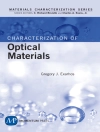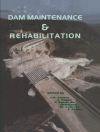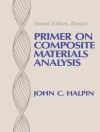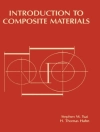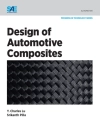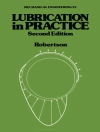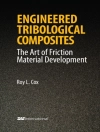This collection presents papers from a symposium on extraction of rare metals as well as rare extraction processing techniques used in metal production. Topics include the extraction and processing of elements like antimony, arsenic, gold, indium, palladium, platinum, rare earth metals including yttrium and neodymium, titanium, tungsten, and vanadium. Rare processing techniques are covered, including direct extraction processes for rare-earth recovery, biosorption of precious metals, fluorination behavior of uranium and zirconium mixture of fuel debris treatment, and recovery of valuable components of commodity metals such as zinc, nickel, and metals from slag.
Daftar Isi
Part 1: Rare Earth Elements I.- The Economics of the Search Minerals Direct Extraction Process for Rare Earth Recovery.- Recovery of Critical Rare Earth Elements for Green Energy Technologies.- Selective Reduction and Separation of Europium from Mixed Rare-Earth Oxides from Waste Fluorescent Lamp Phosphors.- Application of Rare Earths for Higher Efficiencies in Energy Conversion.- Microwave Treatment for Extraction of Rare Earth Elements from Phosphogypsum.- Selective Separation of Rare Earth Elements Utilizing Vapor Phase Extraction.- Observation of Oxidation of Nd-Magnet In High Temperature Recycling/Recovery Process.- Part 2: Rare Earth Elements II and Platinum Group Metals.- Electrochemical Behavior of Neodymium in Molten Chloride Salts.- Novel Reactive Anode for Electrochemical Extraction of Rare Earth Metals from Rare Earth Oxides.- Electrochemical Formation of Nd Alloys Using Liquid Metal Electrodes in Molten Li Cl-KCl Systems.- Challenges in the Electrolytic Refining of Silver –Influencing the Co-Deposition through Parameter Control.- Vapor Treatment for Alloying and Magnetizing Platinum Group Metals.- Biotechnological Recovery of Platinum Group Metals from Leachates of Spent Automotive Catalysts.- Recovering Palladium from Chloridizing Leaching Solution of Spent Pd/Al2O3Catalyst by Sulfide Precipitation.- Mechanism of Intensifying Cyanide Leaching of Gold from a Calcine by the Pretreatment of Acid or Alkali Washing.- Part 3: Base and Rare Metals.- Disclosure of the Kinetic Relations of Semidirect Cemented Carbide Leaching in Acid Media.- A New Two-Stage Process for Preparation of Ti/Ti-Al Alloys.- Study on Pre-Reduction Mechanisms of Chromium Ore Pellets in SRC Process.- Recovery of Valuable Metals from High-Content Arsenic Containing Copper Smelting Dust.- Sulfuric Acid Leaching of Mechanically Activated Vanadium-Bearing Converter Slag.- Present Status and Development of Comprehensive Utilization of Vanadium-Titanium Magnetite.- Review of Ti O2-Rich Materials Preparation for the Chlorination Process.- Part 4: Poster Session.- Adsorbents for Selective Recovery of Heavy Rare Earth Elements.- Behavior of Sec-Octylphenoxy Acetic Acid (CA-12) in Yttrium Recovery from High Concentrated Heavy Rare Earths Mixture.- Preparation of Molybdenum Powder from Molybdenite Concentrate Through Vacuum Decomposition-Acid Leaching Combination Process.- Pressure Leaching Behavior of Molybdenum-Nickel Sulfide from Black Shale.- Selective Recovery of Scandium from Sulfating Roasting Red Mud by Water Leaching.- Study for Preparation of Industrial Ammonium Molybdate from Low Grade Molybdenum Concentrate.- Study of a Synergistic Solvent Extracting System to Separate Yttrium and Heavy Rare Earths: A Deep Investigations on System Behavior.- The Recovery of Bismuth from Bismuthinite Concentrate Through Membrane Electrolysis.
Tentang Penulis
The Minerals, Metals & Materials Society (TMS) is a member-driven international professional society dedicated to fostering the exchange of learning and ideas across the entire range of materials science and engineering, from minerals processing and primary metals production, to basic research and the advanced applications of materials. Included among its nearly 13, 000 professional and student members are metallurgical and materials engineers, scientists, researchers, educators, and administrators from more than 70 countries on six continents.


